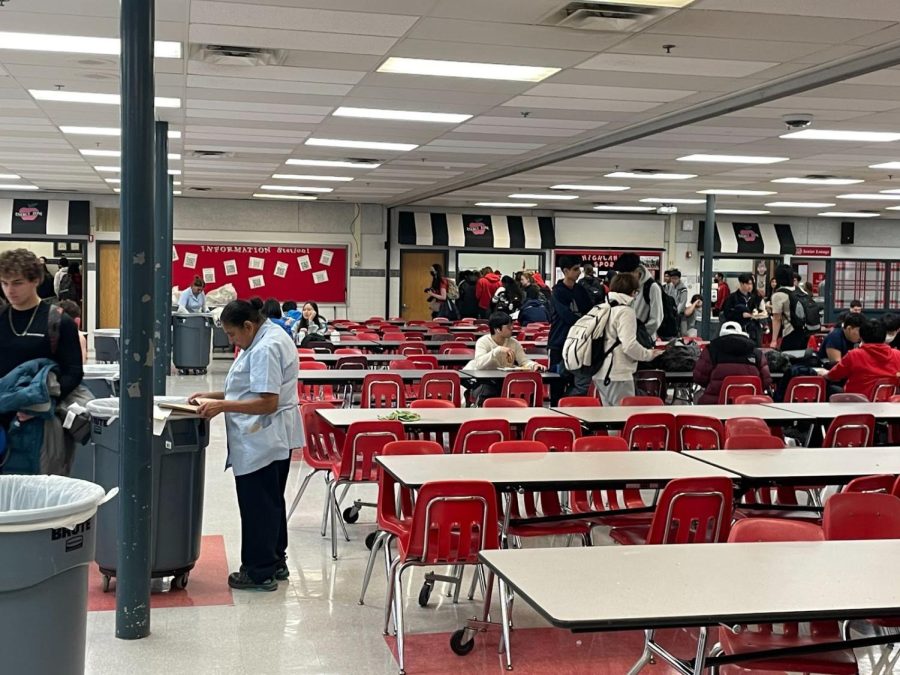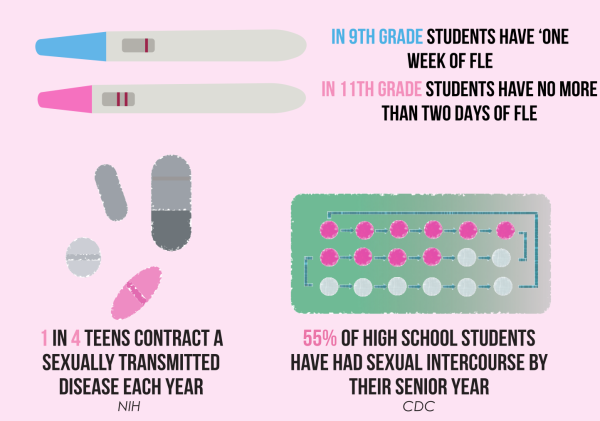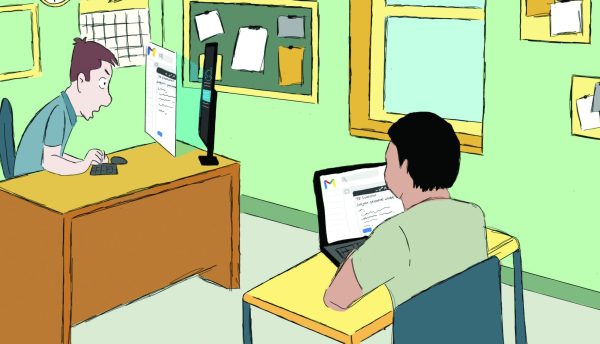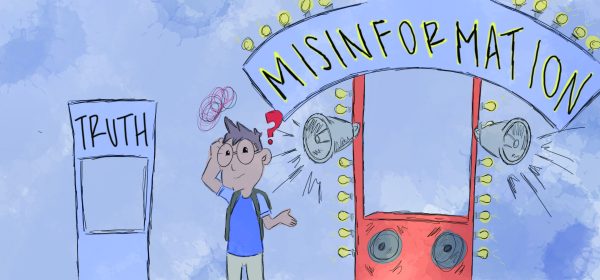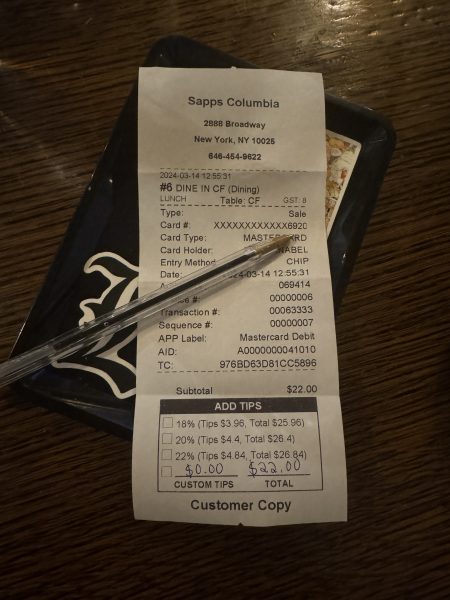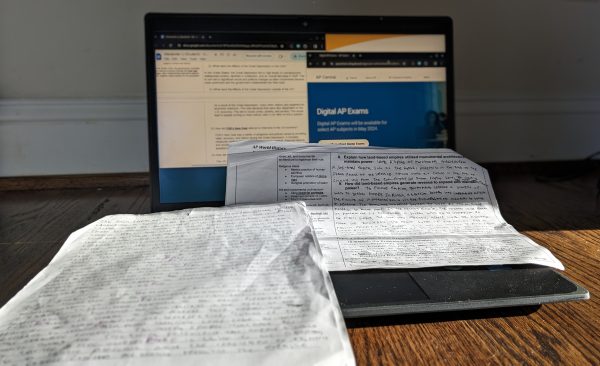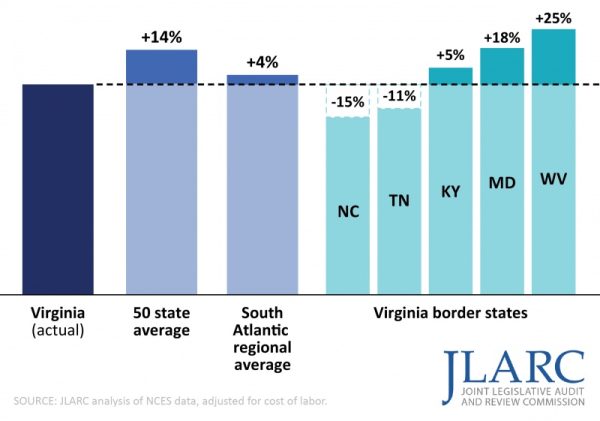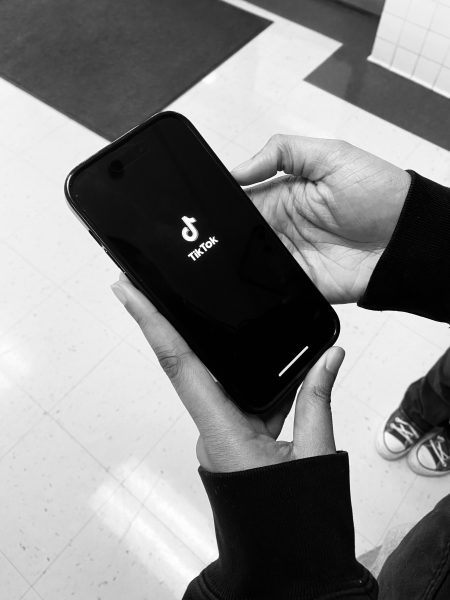McLean provides nutritious, affordable and decent lunches
FCPS’s school provided meals aren’t as bad as students make them out to be
Students flood the cafeteria, lining up for food during lunches.
From nutritional value to just plain taste, school lunch seems to be constantly under fire. As a result of the Healthy Hunger Free Kids Act of 2010, school lunches in the U.S have changed drastically over the last decade. For example, in FCPS, many cherished favorites have been removed from their menus such as ice cream and frozen fruit cups in attempts to move to healthier options. These health measures have worked, too; contrary to the iconic anecdote of repulsive, nutrient-free school lunches, FCPS has implemented fairly healthy and decent tasting school lunches at cheap prices.
In terms of taste, FCPS lunches, provided by Energy Zone, are half decent. The chicken sandwiches taste great and the burgers are consistently juicy; the school sometimes even provides pickles for you to add. Compared to a McDonald’s quarter pounder, the quality is similar, though some would argue that McDonald’s produces better tasting burgers than the ones served in school.
“As a student, I prefer the chicken sandwich over any other sort of sandwich or burger,” said senior Will Ellison.
Additionally, the nutritional value of school lunch meals aren’t awful either. For example, according to FCPS’s online lunch menu Nutrislice, the penne pasta with marinara sauce has only 230 calories, 380 mg of sodium, 38 grams of carbs, no cholesterol and 5 grams of protein. Furthermore, the cheese pizza only has 320 calories, 480 mg of sodium, 35 grams of carbs, 30 mg of cholesterol and 17 grams of protein. Compared to the 2800 and 2000 calories needed for 16 year old boys and girls respectively, meals in FCPS are almost too low in calories.
However, calories aren’t everything. In fact, a common concern over school lunches before the Healthy Hunger Free Kids Act was the alarmingly negligible amount of nutrients students were getting from their foods. Nonetheless, that doesn’t seem to be the problem in FCPS. FCPS meals are required to always provide the options of a side of fruit and/or veggies. Admittedly, not every fruit on the menu is healthy, like canned peaches or pineapples that are high in sugar. However, healthier options are always available, and thus allow students to meet their daily nutritional intake requirements.
Thankfully, if you can’t pack a lunch, the school lunch isn’t expensive either. For most high school students, an entrée, side, and fruit or vegetable only costs $4.50, a cheap price for the value. However, if it is too expensive for a student, they can apply for free or reduced priced meals. If the family’s income is within 1.3-1.85 times the poverty level, they qualify for reduced price meals, which discount is decided by the federal government. If a family’s income is below 1.3 times the poverty level, they qualify for completely free meals. Around 31% of FCPS students currently qualify for free or reduced prices meals (as of Oct. 31, 2021). These discounted and free meals ensure that everyone in FCPS can get all the nutrients and energy they need to get through the day.
Admittedly, some of the food served can be disgusting. For example, the grilled cheese served is consistently soggy; the melted cheese has the texture of peanut butter and does not ‘string’ in the slightest when broken. Another example is the nacho cheese, which despite the on-point flavor, solidifies after being exposed to air for minutes, creating an unappetizing ‘skin’ on top. However, school lunch shouldn’t be defined by a couple bad meals. Students can consistently get great-tasting meals, as long as they know what and what not to get.
FCPS has clearly provided great tasting and nutritious meals, available to all who need them. Students should be grateful for the meals that they have, whether or not they pack lunch or buy school food.
Your donation supports the McLean High School's independent, award-winning news publication.


